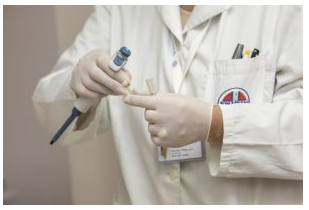
The Fourth Industrial Revolution has come, and no business will stay as it had been. Building on past revolutions – steam, power, and information technologies – that the fourth revolution is where tech starts to incorporate with the biological and physical, getting more profoundly intertwined in our own lives. The ways that we communicate (via Facebook), traveling (through Uber), organising our homes (through smart home tech demanding air conditioning services, fridge or dishwasher repairs and the like) and also store (unquestionably on Amazon) have already changed, to just name a couple. In other places, things look stuck. The experience of managing a disease or visiting a physician has not changed much in thirty decades. However, it will. Health care, despite its vast infrastructure and net of regulations, won’t escape the electronic revolution and patients may benefit. So getprepared to browse a new route on your own wellness travel.
When reflecting on how businesses are changing, two big changes stand out. The first is that the proliferation of electronic technologies which are crossing the difference between virtual and physical worlds. Open platforms, served up via programs on our omnipresent mobile devices lets us do everything fast and conveniently – from selling stuff in a market to scheduling an appointment with an emergency plumber for immediate gas repair. The next change is in business design. Enabled by technology, businesses are moving from company/provider centric to customer/user centric. As customers become accustomed to the ease of the new business models, even the most populous businesses will have to evolve their own offerings.
Regrettably, healthcare has a long way to go. The present state of health care appears intractably positioned from the supplier centric, bodily care quadrant. Case in point: as active suppliers of palliative care, two of these writers normally visit 40 – 50 patients each day. We need those patients to come on-premise to get an appointment. Patients could wait weeks or even months for the trip, and therefore are obliged take away time from their hectic lives to fit into our schedules. As soon as they arrive on site, they wait patiently. They wait patiently in the waiting area, wait at the exam room, await the x-rays, and await the physician (often multiple times). The majority of these patients present with frequent health conditions and will get regular treatments which are supplied off-site, for example physical therapy. The majority don’t require big interventions like surgery, and may really be cared given the right technical aid.
 This maintenance only could not be categorized as “customer centric” like the way heating and cooling appliance repair service and most businesses are, and quite small from the medical care management procedure is. Patients struggle to get their health records, describe their insurance policy, coordinate care between experts, and genuinely know their medical conditions and treatment choices. Several of the most crucial measures you can take in handling health are preventative, and yet people rarely receive advice and support till there’s an issue.
This maintenance only could not be categorized as “customer centric” like the way heating and cooling appliance repair service and most businesses are, and quite small from the medical care management procedure is. Patients struggle to get their health records, describe their insurance policy, coordinate care between experts, and genuinely know their medical conditions and treatment choices. Several of the most crucial measures you can take in handling health are preventative, and yet people rarely receive advice and support till there’s an issue.
Luckily, change is on the horizon. Now, everyone understands that a triple win is possible – enhanced health outcomes, improved patient satisfaction, and reduced price – but our approach is going to need to change. In January 2016, Community Catalyst, a national consumer health advocacy organization, established its Center for Consumer Engagement in Health Innovation at Washington, DC. In the end, Amy Berman, senior program officer for The John A. Hartford Foundation, outlined the Center’s policy priorities with all these incisive remarks, claimed that we are living in a pre-Copernican version where all of the planets float round the healthcare system; the individual is merely one of these. What we want is a change. The foundation wants the individual at the middle. They say they will need to place the sunlight at which it belongs.
We acknowledge that the physician will always play a significant role in medical care. Patients aren’t likely to crowd-source their prescriptions or surgeries. But there’s obviously a huge opportunity to enhance the medical care ecosystem, like fixing the blocked plumbing and drains in your household. Input the entrepreneurs, startups, and disruptors that are bringing focus and power back to the individual. There are now more resources than ever, for every one of us to take charge of our healthcare. To better comprehend our wellbeing, to locate the best suppliers to assist us, and also handle our remedy. The fact is no one, together with the possible exception of your mom, will ever care as much about your health as possible.
And for the almost 13 percent of the U.S. workforce that works in Medical Care, we ask that you jump into the future instead of holding before. Use the technology available now to place patients in the middle of your services. This will need some modification.
